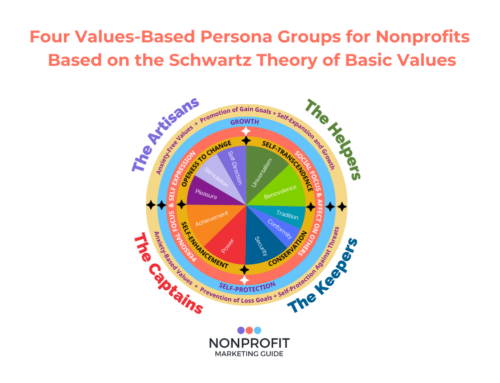 I’ve started guest blogging for BoardAssist, which offers great advice to board members about how they can be more effective, and to nonprofit staff about working with boards. I’m reprinting my first post here from the BoardAssist blog, which is directed towards board members themselves, but I hope it will be a helpful read to anyone managing communications staff. ~Kivi
I’ve started guest blogging for BoardAssist, which offers great advice to board members about how they can be more effective, and to nonprofit staff about working with boards. I’m reprinting my first post here from the BoardAssist blog, which is directed towards board members themselves, but I hope it will be a helpful read to anyone managing communications staff. ~Kivi
As a nonprofit communications trainer and coach, I’ve had this conversation more times than I can count . . .
Nonprofit Communications Director: I don’t think our newsletter is working, but my board members say they love it.
Me: I don’t care what your board members think about your newsletter, and neither should you.
Communications Director: (awkward silence)
Me: Your board members are not the target audience for your newsletter, so their opinions about it aren’t that important.
Even if as a board member, your demographics match those of your average donor or typical participant in your nonprofit’s programs, the fact that you are on the board sets you apart in major ways from those who are not. You know too much, and you will look at communications from the organization in a completely different context.
Therefore, what you personally think as a reader about your nonprofit’s newsletter or fundraising letter is not nearly as important as what the people on the receiving end will think about it.
How to Be Helpful on Communications Decisions
That doesn’t mean that board members can’t be helpful when it comes to communications decisions. Of course, the opposite is true. Every nonprofit communications director I know would love some allies on the board!
So, what’s the best way to help in these situations?
1. Understand Who the Target Audience Really Is
First, understand who the target audience really is and always do your best to put yourself in their shoes. It’s tough. It takes research, and listening, and practice. But you can do it.
Encourage conversations between staff and other board members about the kinds of people you are trying to reach with your communications, whether they are program participants, donors or volunteers, or other influential people the nonprofit needs on its side. Who are these people, really? What do they do during the day? What do they like or dislike? Who influences them most?
When possible, make a point to get to know those kinds of people personally. Spend a morning or an afternoon shadowing staff or volunteers at they interact with clients. At fundraising events, get up from your reserved table and mingle at the back of the room.
2. Let Others Who Know Better Take the Lead
When you have people around you who are a closer match than you are to the kind of person you are trying to reach, listen and trust your fellow board members and staff, even if they have less nonprofit experience than you do.
For example, I often hear from older board members about how they wish younger board members would step up and lead. But just as often, when younger board members suggest events or communications tactics they believe will recruit younger supporters to the organization, those ideas are shot down as “risky” or “untested.”
If you expect others to lead, you sometimes have to be willing to follow.
3. Discourage “Kitchen Sink” or “All in One” Communications
Communications that are designed to please everybody, in fact, usually bore everybody stiff. They are often too general or too overstuffed with information to be of keen interest or relevance to anyone.
Communications staff who know better are often asked to “add just a few sentences” about a board member’s pet project or to “make everyone aware of everything we do.” Resist the urge to pile on more information. And when you see “everything but the kitchen sink” communications, encourage staff to focus on the one or two things that really are most important to the specific target audience for that communication.
Just remember, it’s not about you or your nonprofit, it’s about the people you are communicating with and serving. Help your nonprofit understand and stay true to their needs and desires in its communications.






